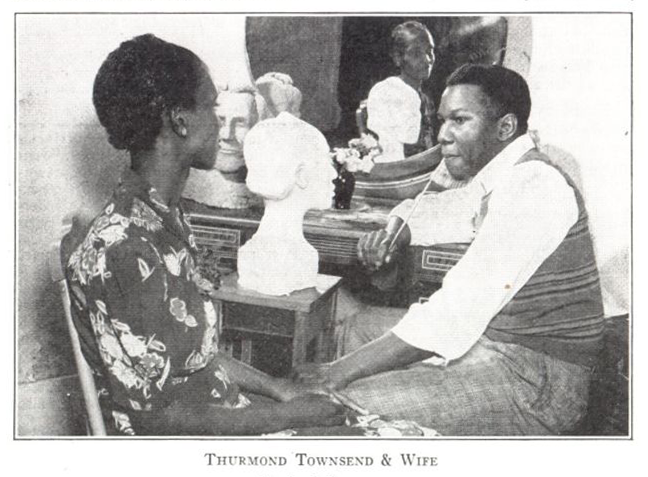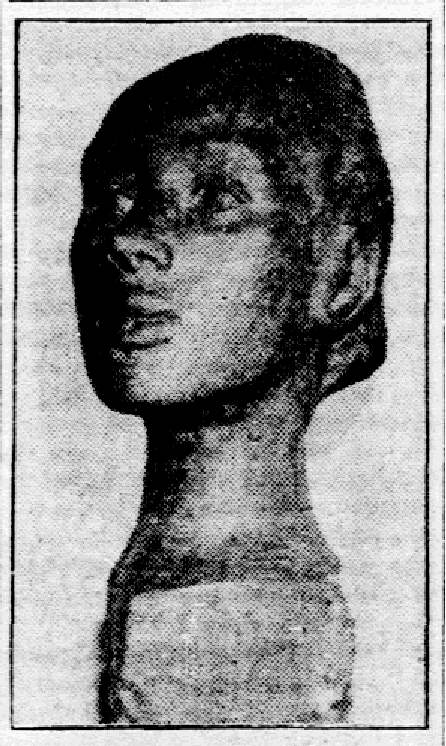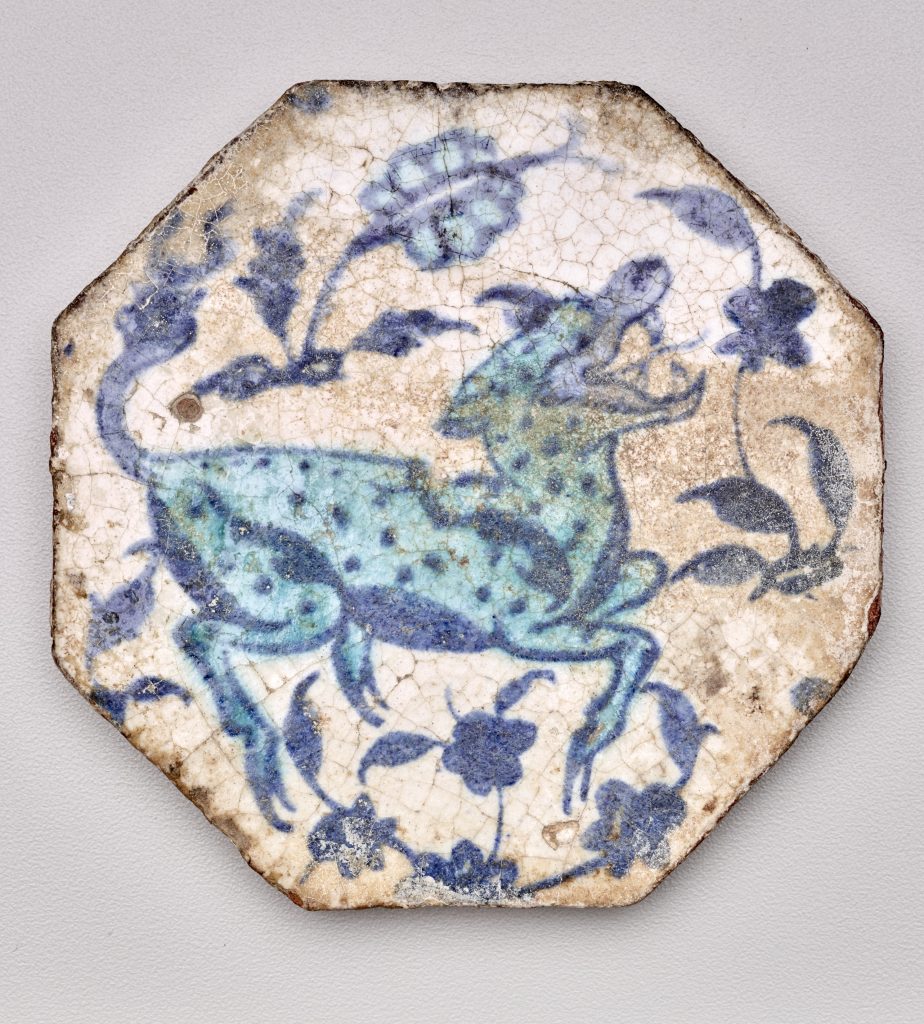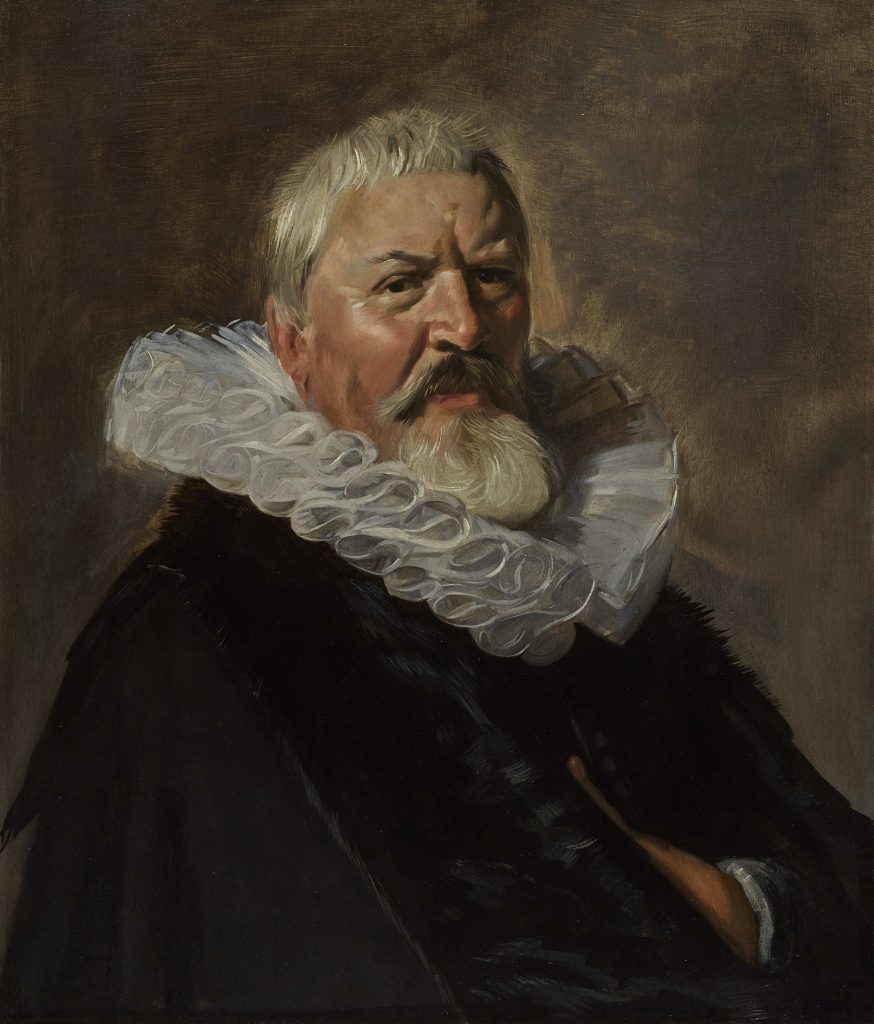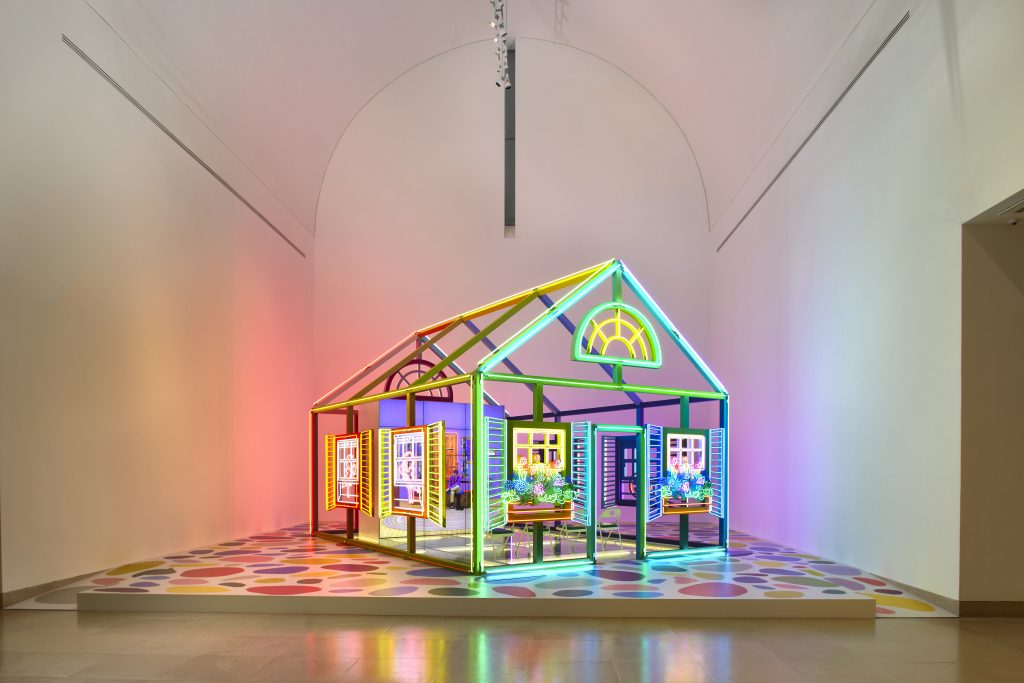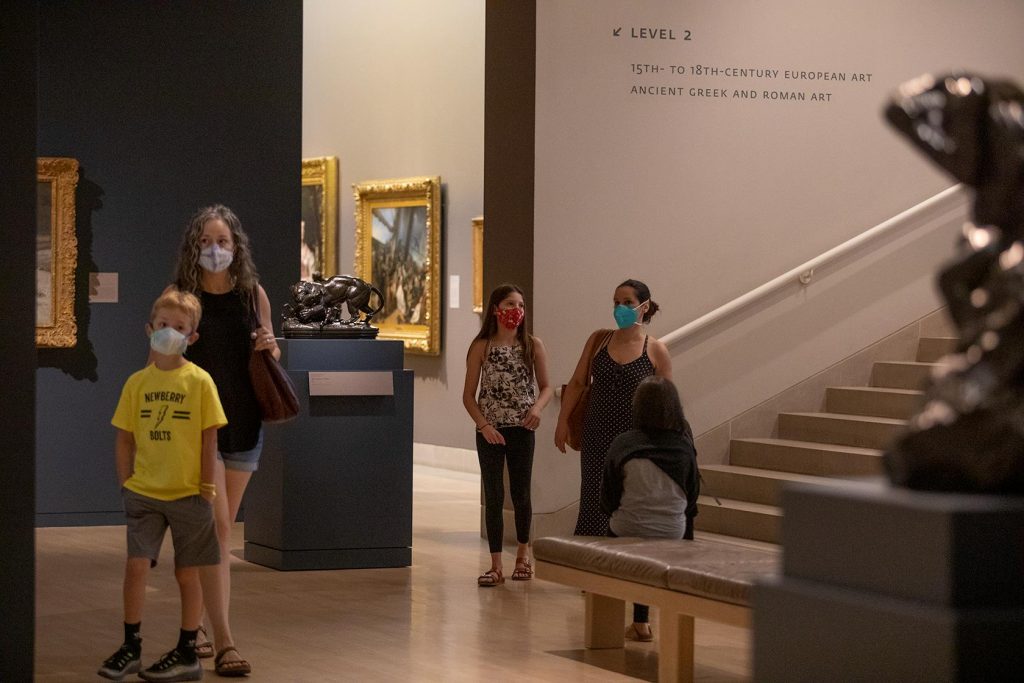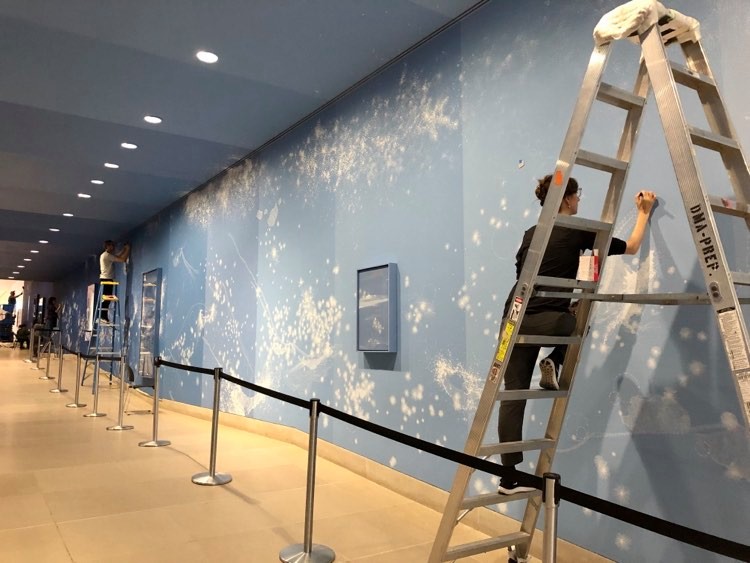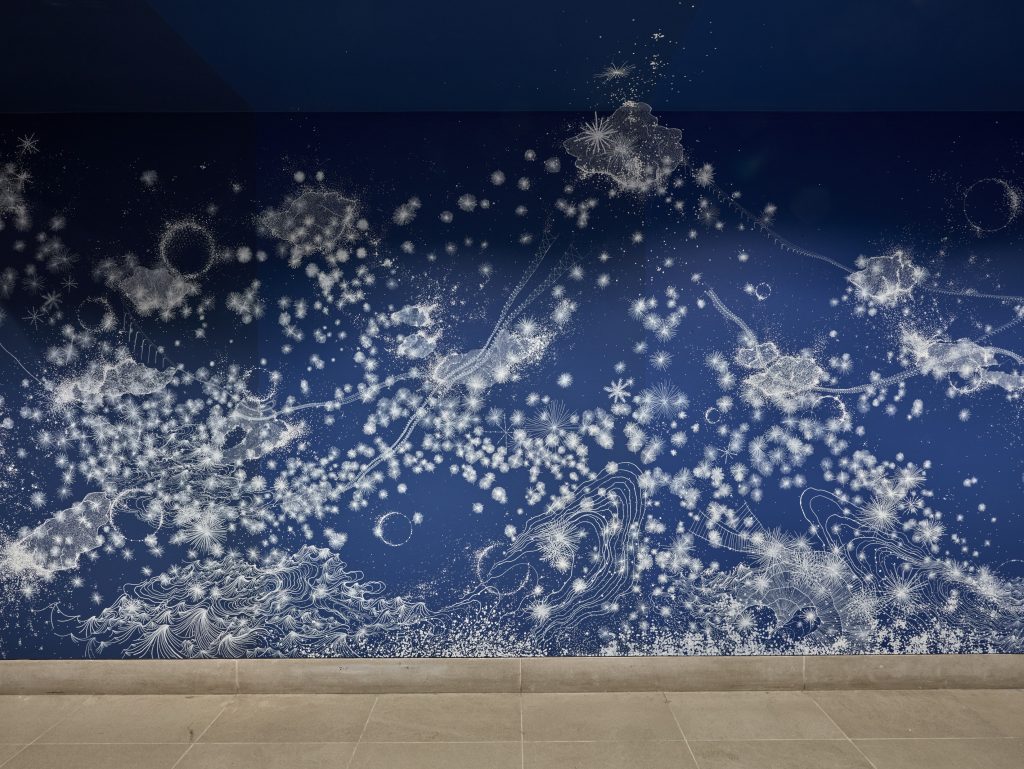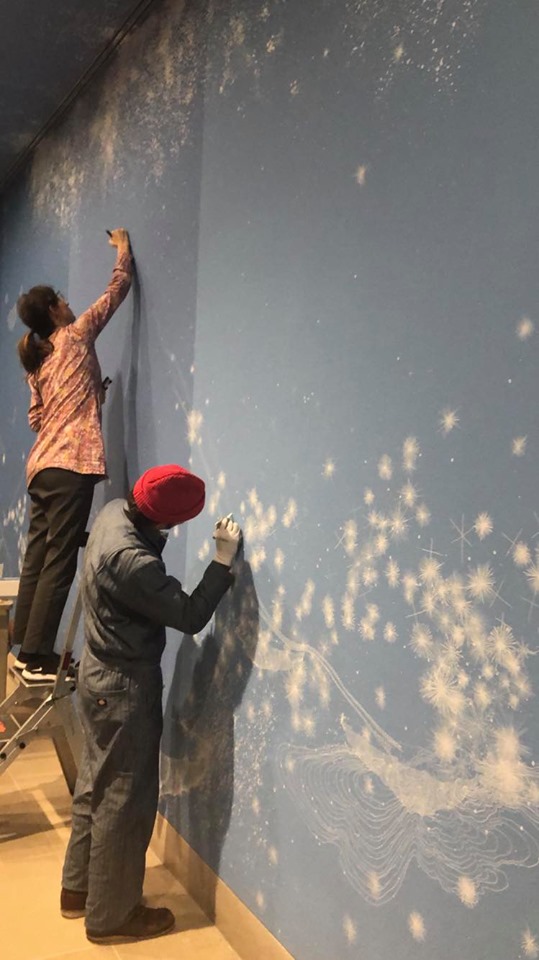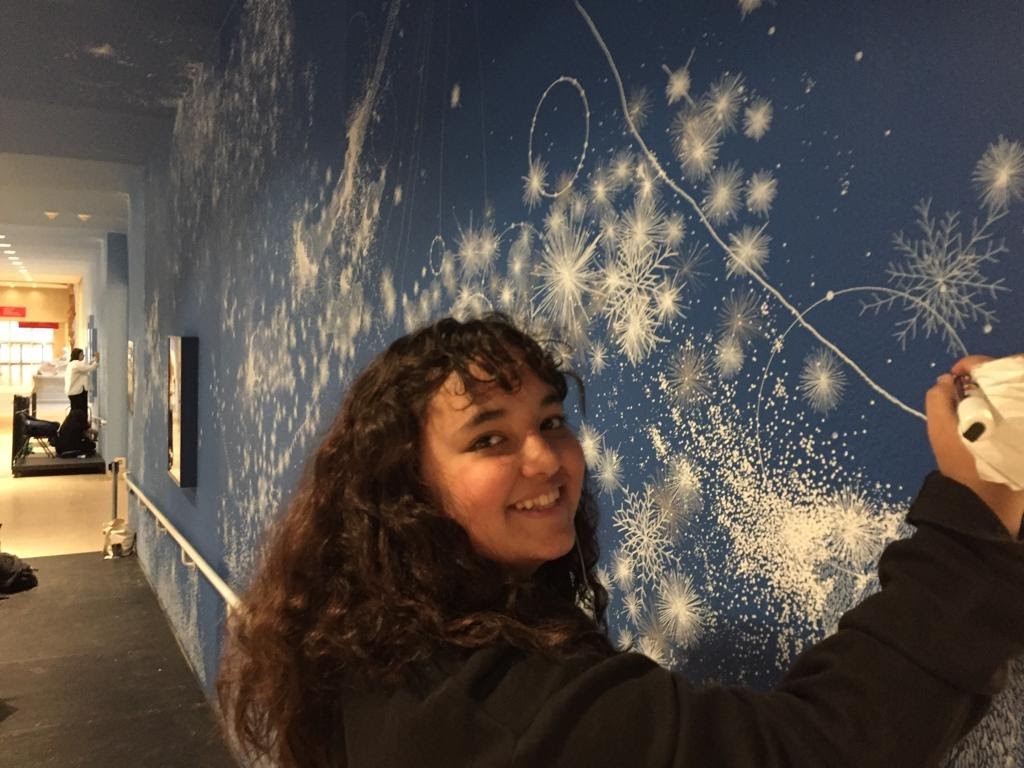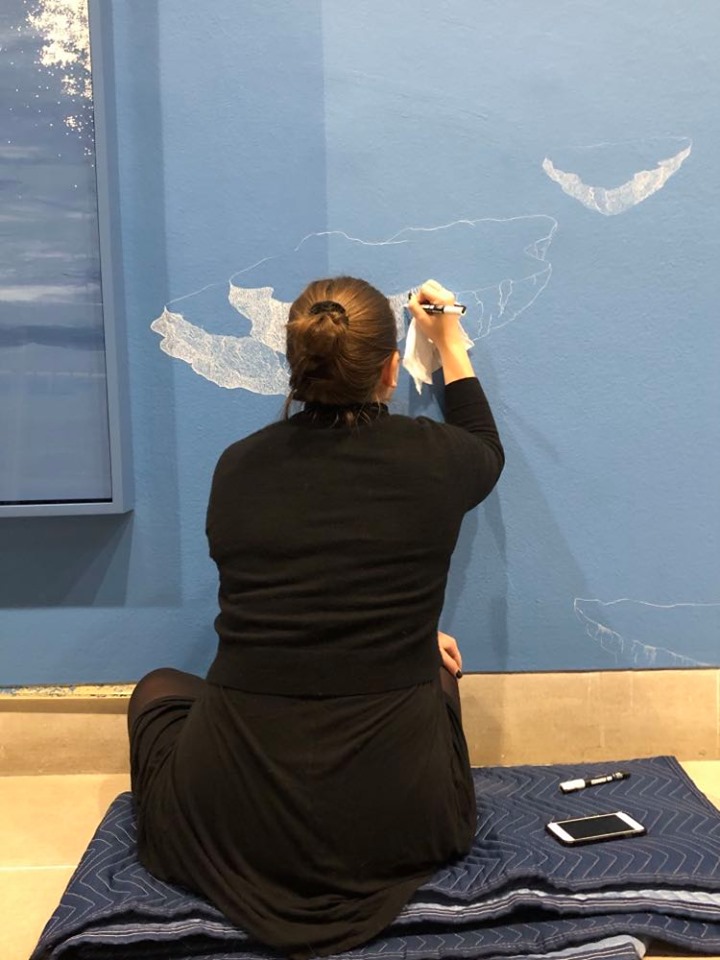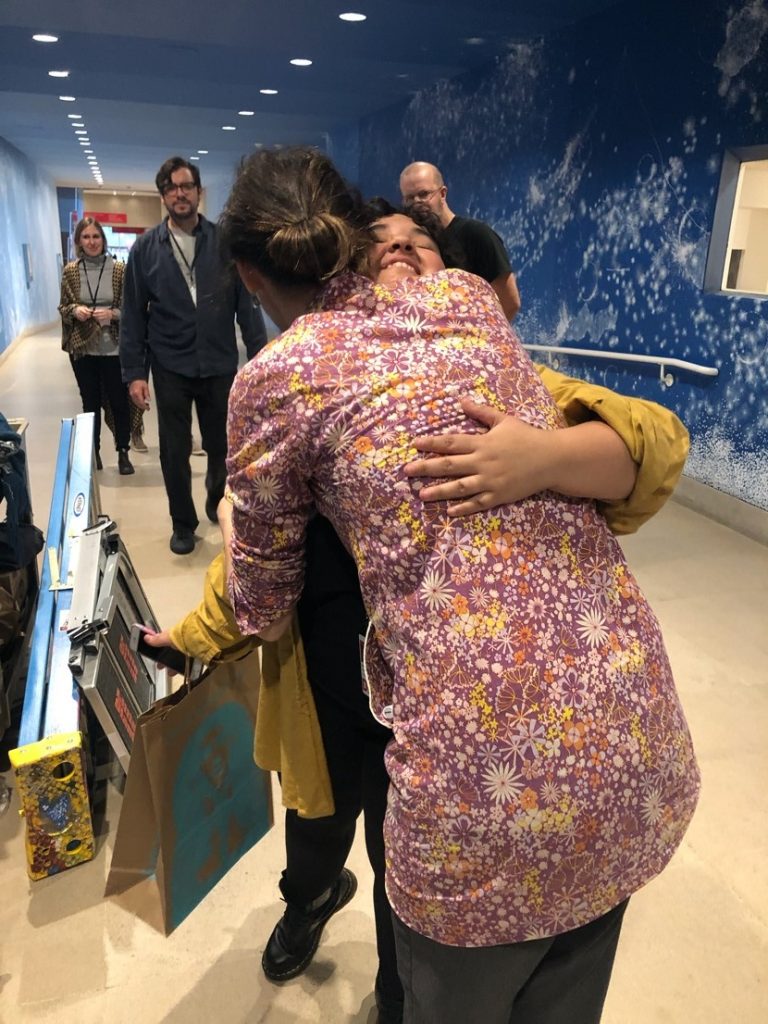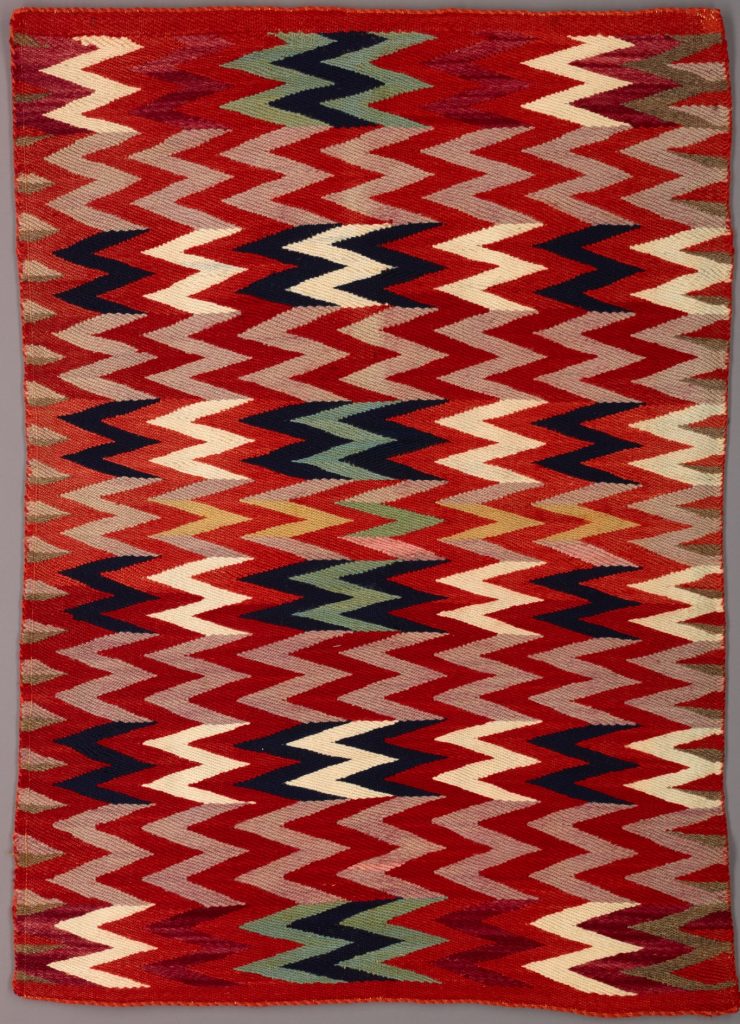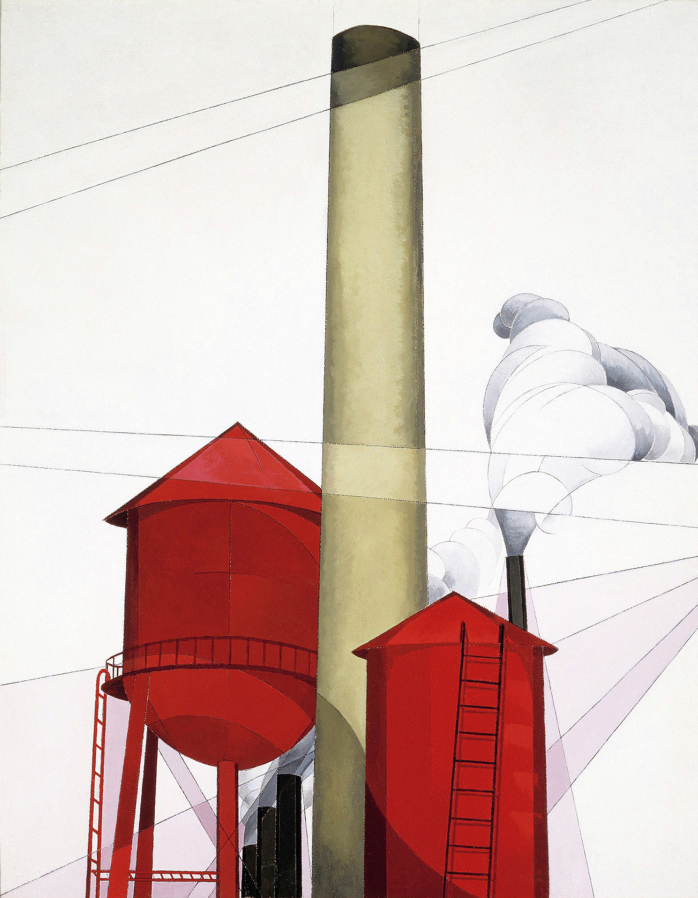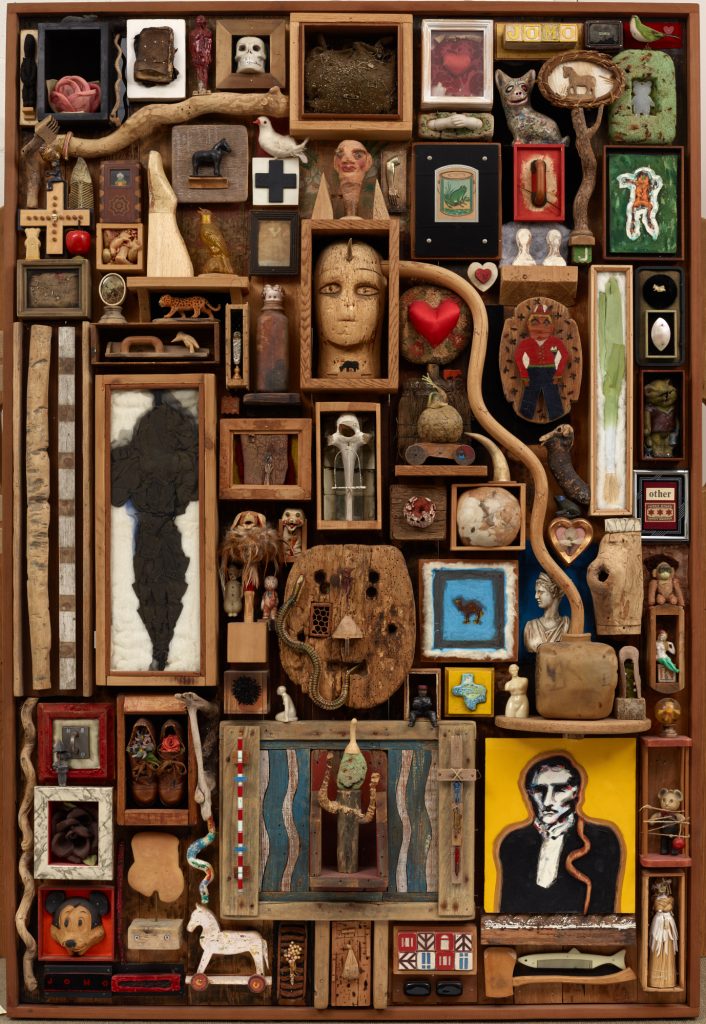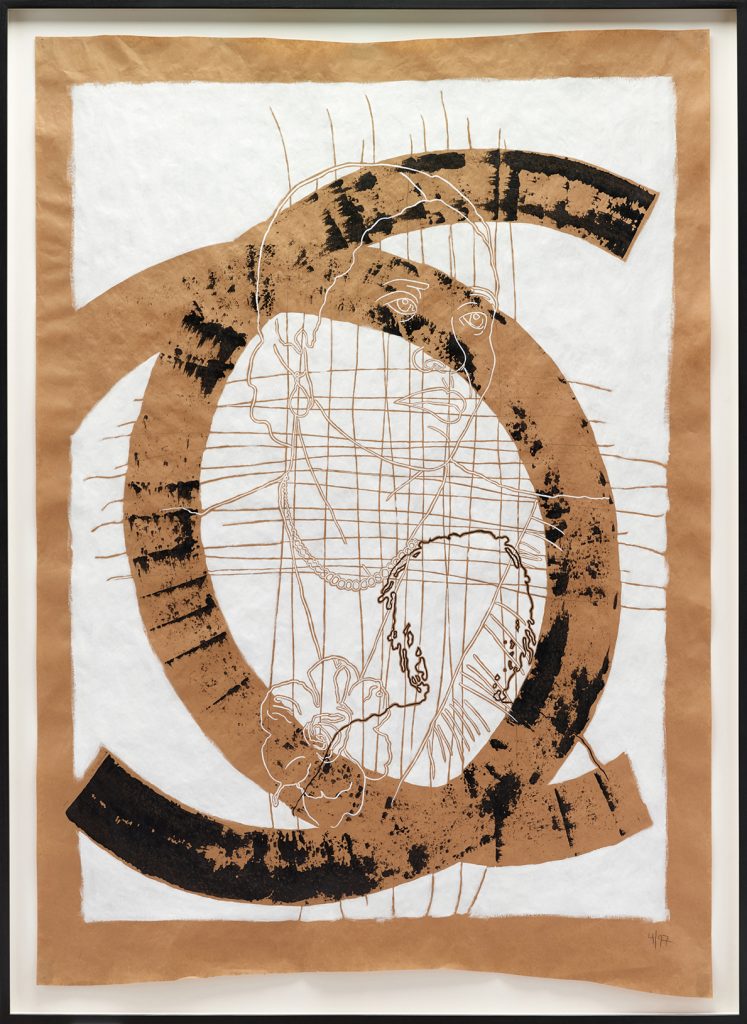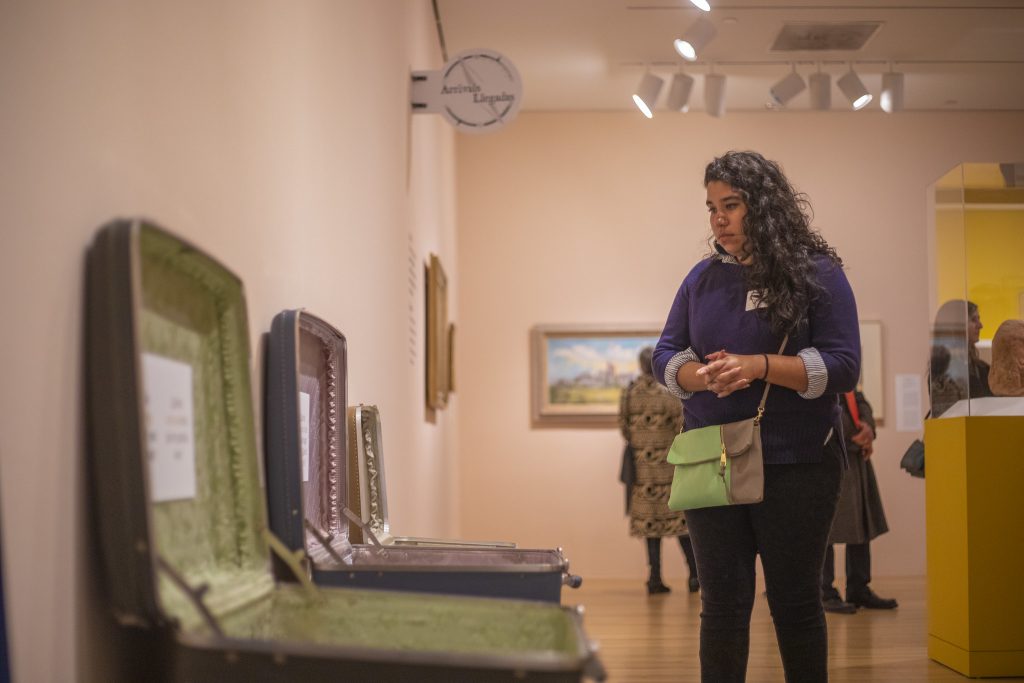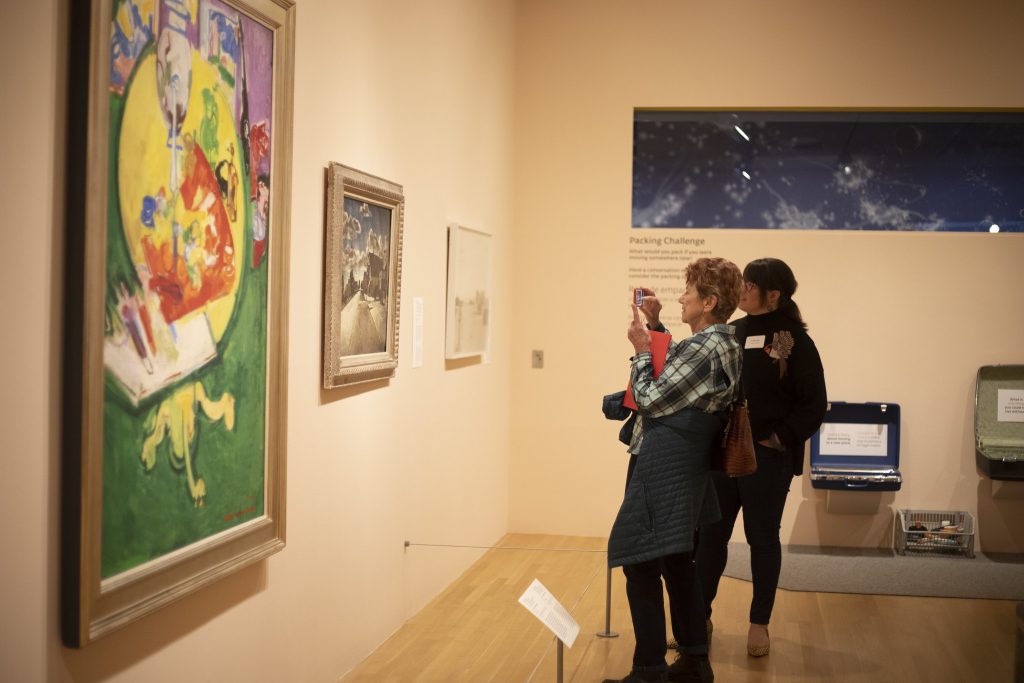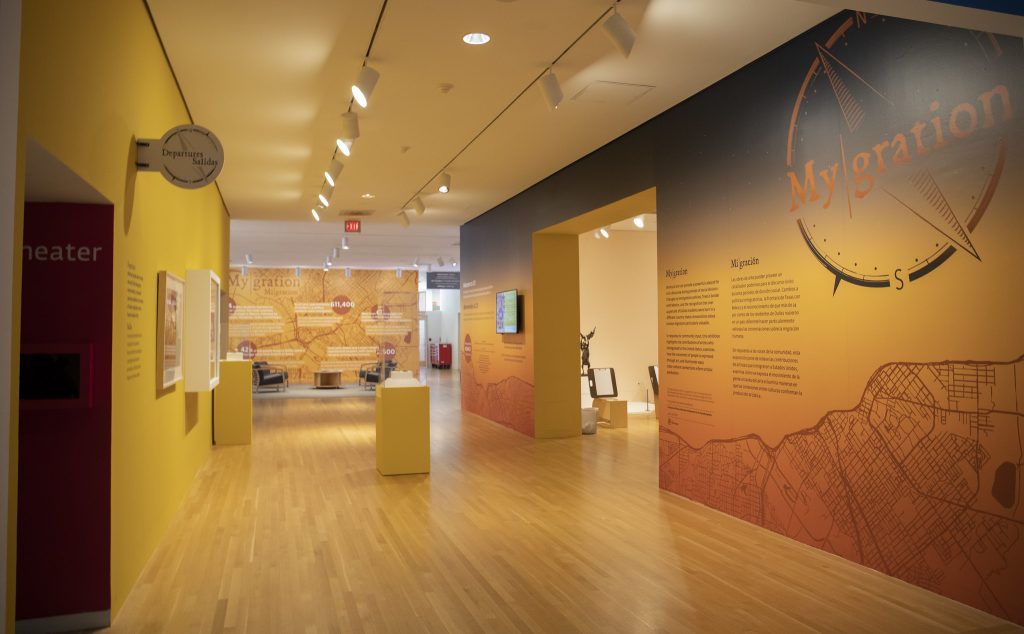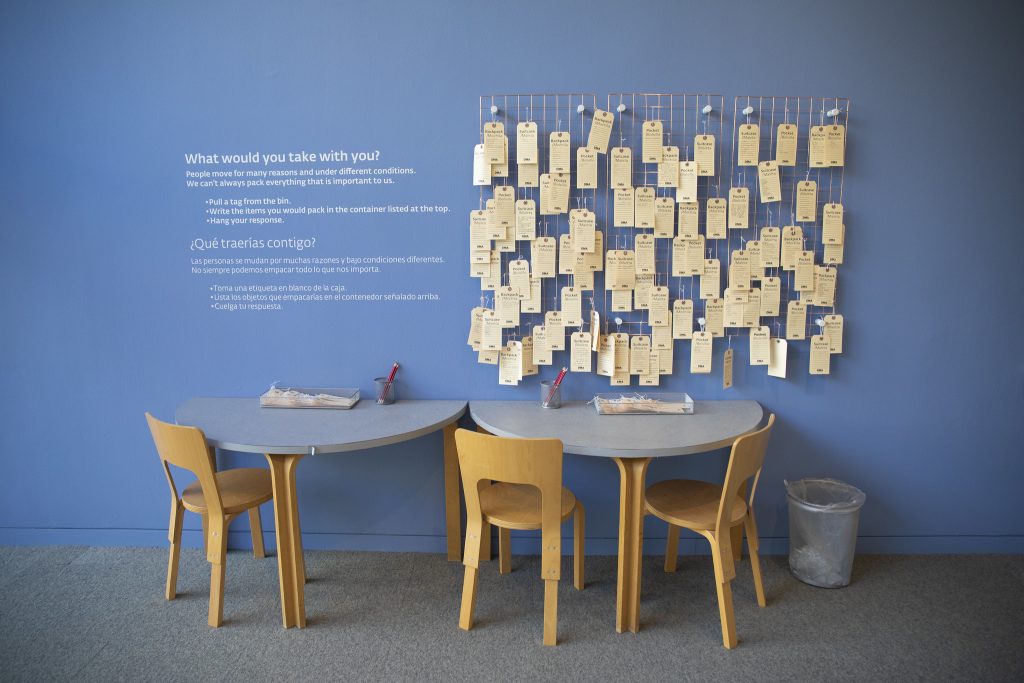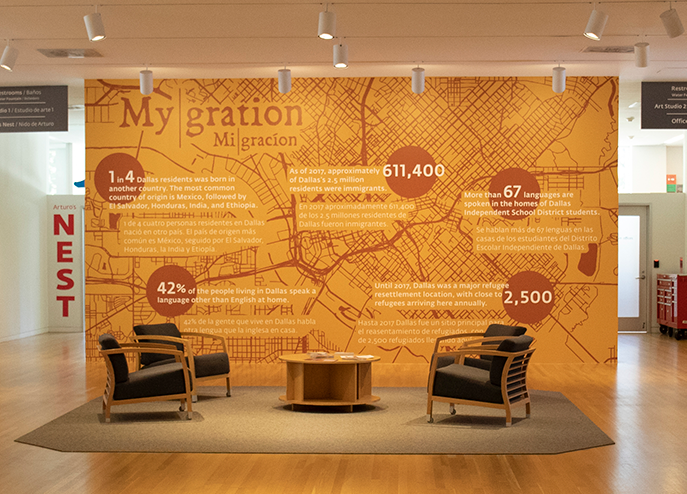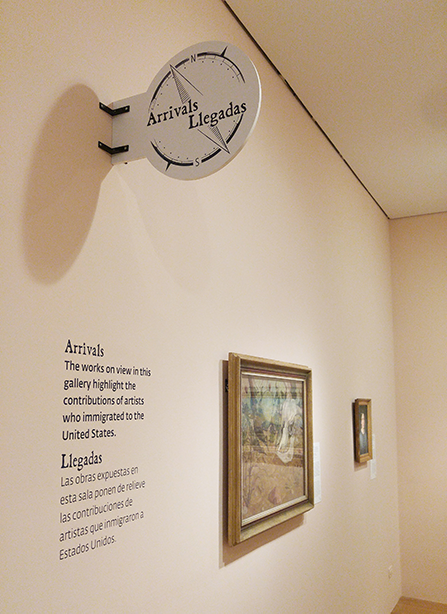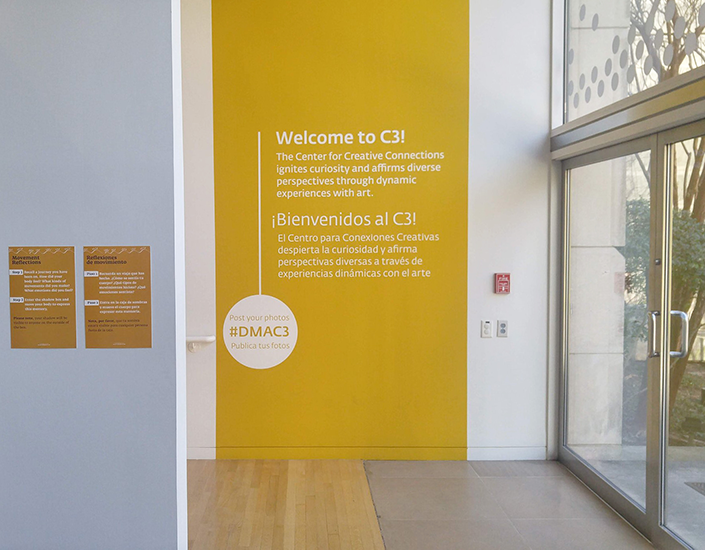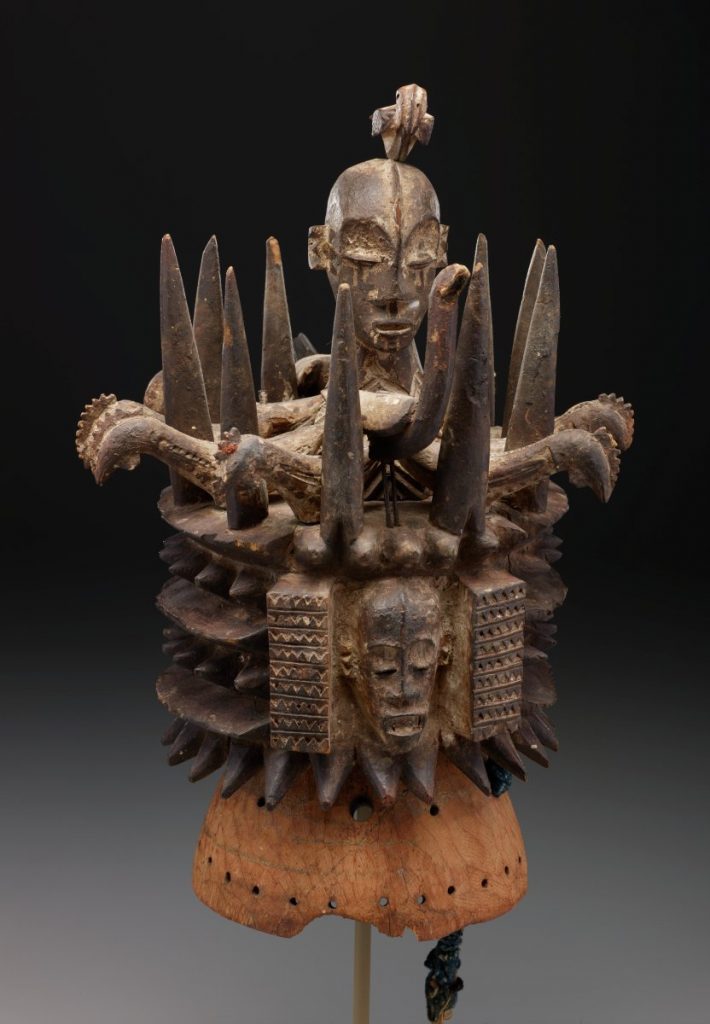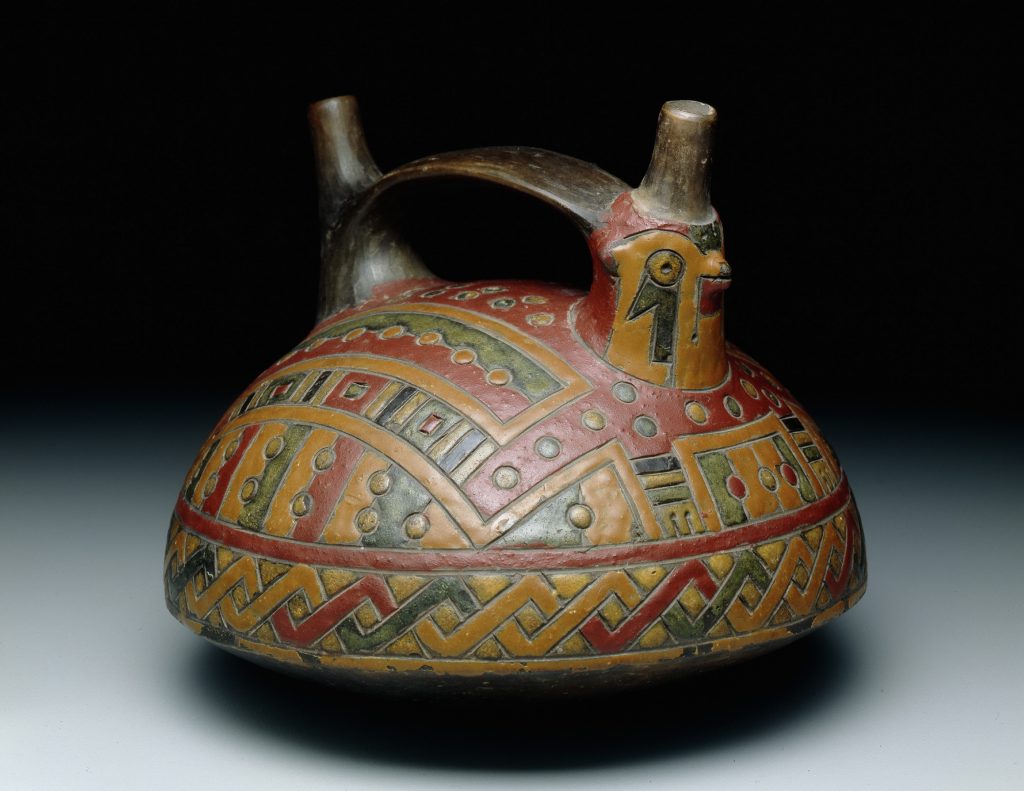When you walk past a painting in a museum, do you ever wonder what the back side looks like?

For curators and researchers, the verso, or B-side, of a painting can be a mine of information about its past life. Paul Cézanne’s Still Life with Carafe, Milk Can, Bowl, and Orange, currently featured in the Reves Spotlight rotation gallery on the DMA’s third level, is a case in point: the back of the frame was once filled with stamps and labels applied over many years by the painting’s former owners and their shippers. Those historical records have subsequently been transferred to a backing board to guarantee their preservation and that of the precious information they carry. As a result, this backing board is now reminiscent of an avid traveler’s passport stamp page.
In the top right, a rectangular piece of cardboard reads “about 1880-2 / Venturi” in faint handwritten pencil. This Italian art historian was the author of the first catalogue raisonné of Cézanne’s works, which is perhaps why his dating of this painting was carefully recorded.
Even before arriving in the US, Cézanne’s Still Life had traveled internationally. From Paris, where the artist likely sold it to a dealer, it entered a private collection in Amsterdam before returning to the French capital in the early 1920s, where it was acquired by Marius de Zaya, an artist and dealer based in New York City who offered it in his newly founded gallery among “drawings, paintings and sculptures of the very best artists of the modern movement.”[1] There, a founder of the Museum of Modern Art (MoMA), Lillie P. Bliss, purchased it, and upon her death she bequeathed it to that institution, which eventually deaccessioned the work in 1944.
As recorded by two large labels on the left side of the panel, at MoMA the painting was known as The Water Can, based on the metal vessel at its center. In 1985 the enigmatic nature of that element was discussed in a letter exchange between then DMA director Steven Nash and Columbia University professor Theodore Reff, who concluded: “The picture is quite wonderful, charming, fresh, simple, almost naïve, and will grace your collections, regardless of the identity of the objects in it.”[2]
Shortly after Wendy and Emery Reves acquired it in 1955, the picture was referred to as simply Nature Morte (still life) or Nature Morte en bleu (still life in blue) in two French exhibitions that were likely the occasion in which the painting received the two transportation labels seen on the right side of the backing board. After entering the DMA’s collection in 1985, the painting’s current title was first formulated in 1998 and slightly revised in 2003 (the term “coffee” referring to the bowl was dropped) in an effort to describe the subject matter as accurately as possible. While we must agree with Reff that the charm of this picture remains unchanged no matter what we call it, by recording the painting’s previous titles and where it traveled, these labels have been essential to the work of art historians to reconstruct the history of the ownership, exhibition, criticism, and scholarship of this object over its 140-plus years of existence.
Stop by to see this work in the Reves Spotlight rotation gallery now through September 27 and admire more still lifes at the DMA in an exhibition focusing on the work of Cubist painter Juan Gris, an avid admirer of Paul Cézanne. In Cubism in Color: The Still Lifes of Juan Gris, the labels and inscriptions on the back of Guitar and Pipe are on full display.
Gloria de Liberali is the Dedo and Barron Kidd McDermott Intern Fellow for European Art at the DMA.
[1] John Rewald, The Paintings of Paul Cézanne. A Catalogue Raisonné (New York: Harry N. Abrams, 1996), 1:288.
[2] Their correspondence is preserved in the painting’s object file at the DMA.


